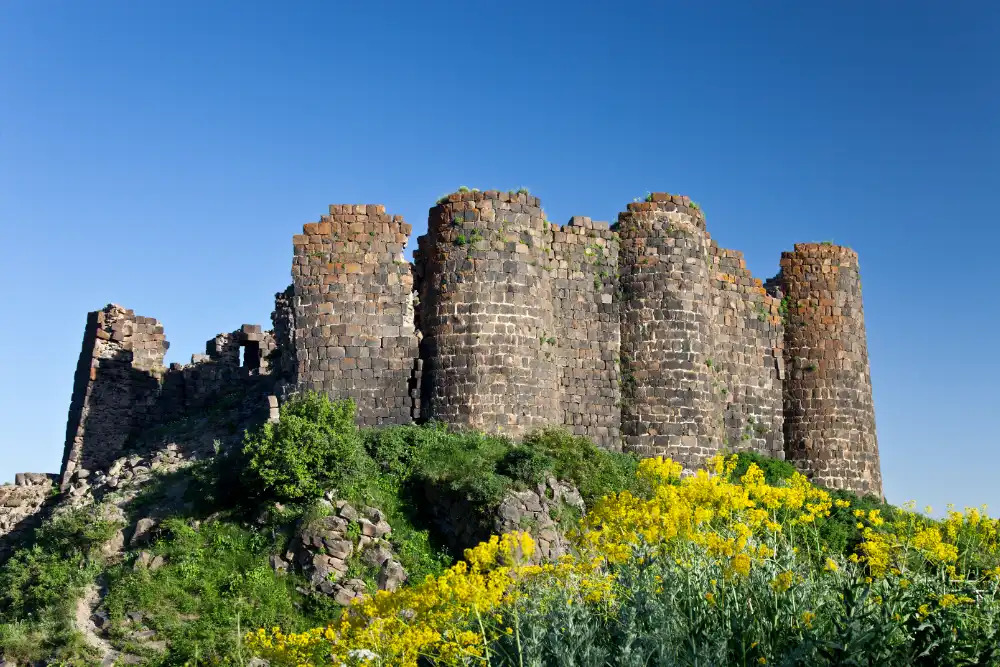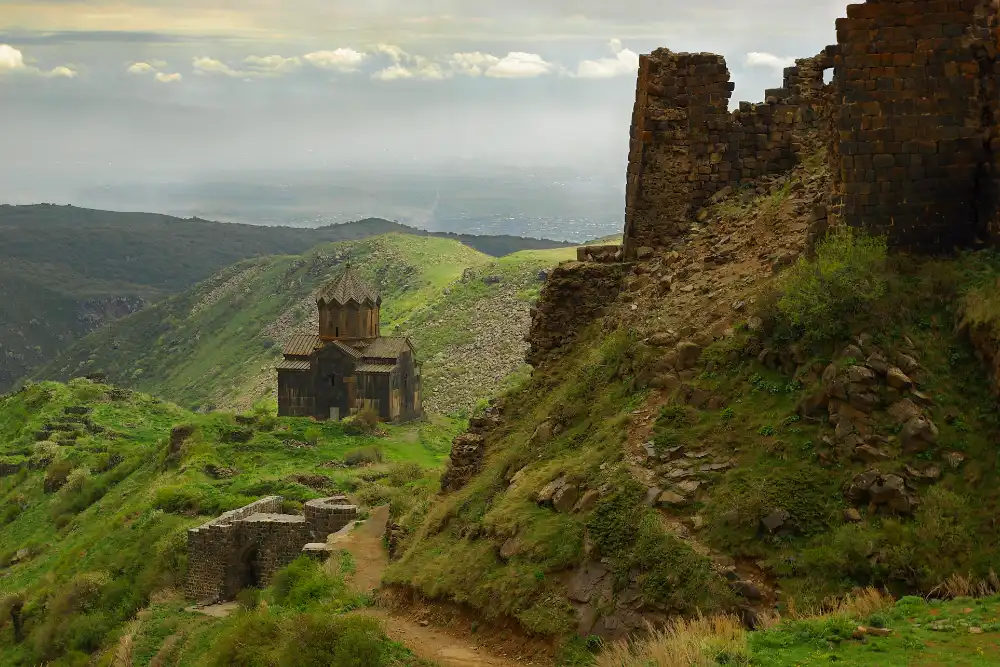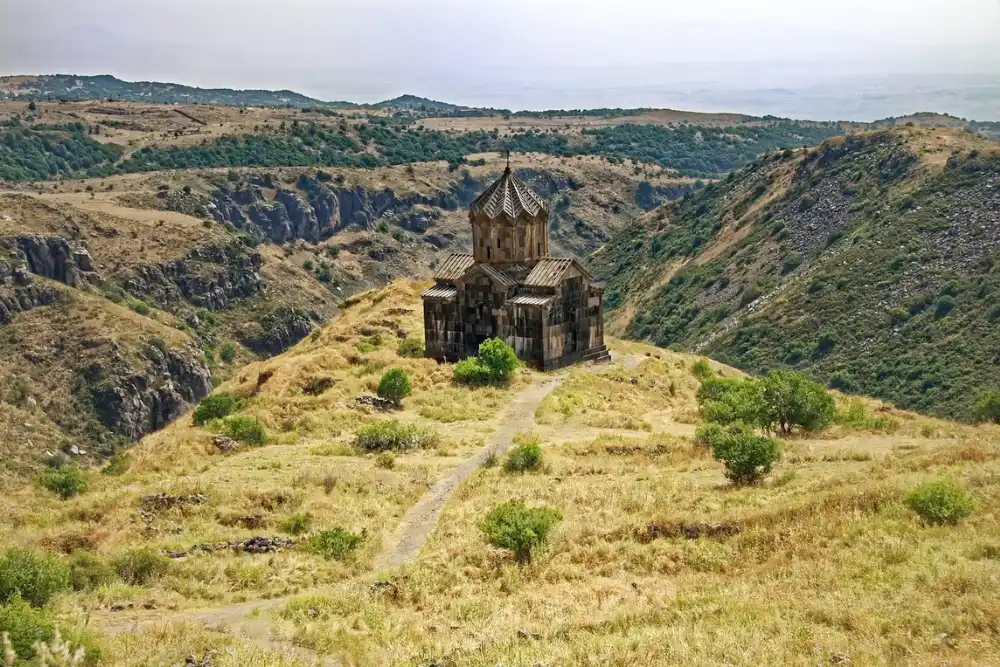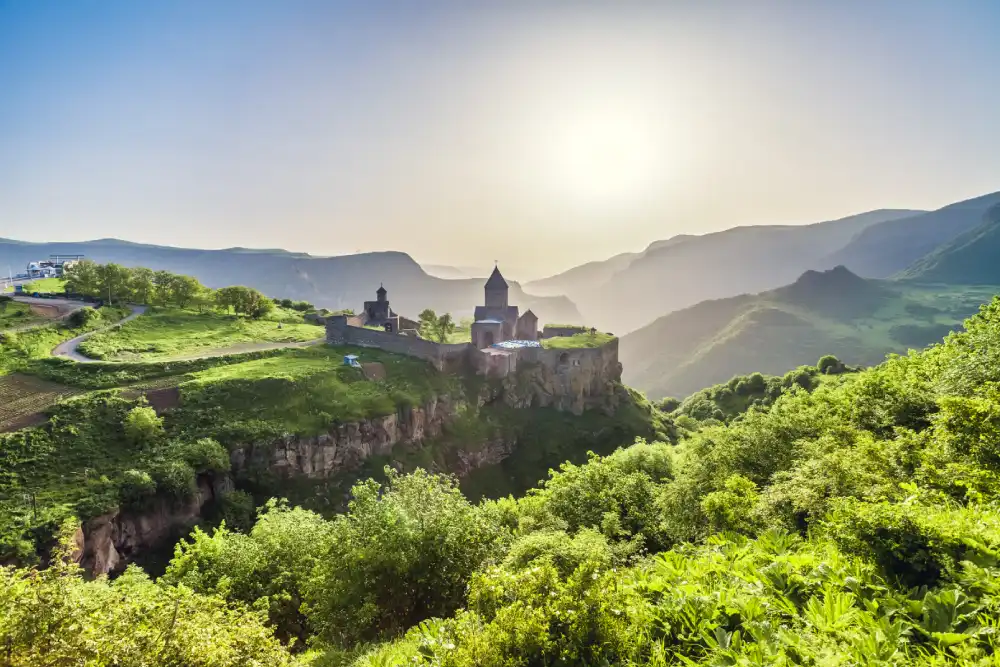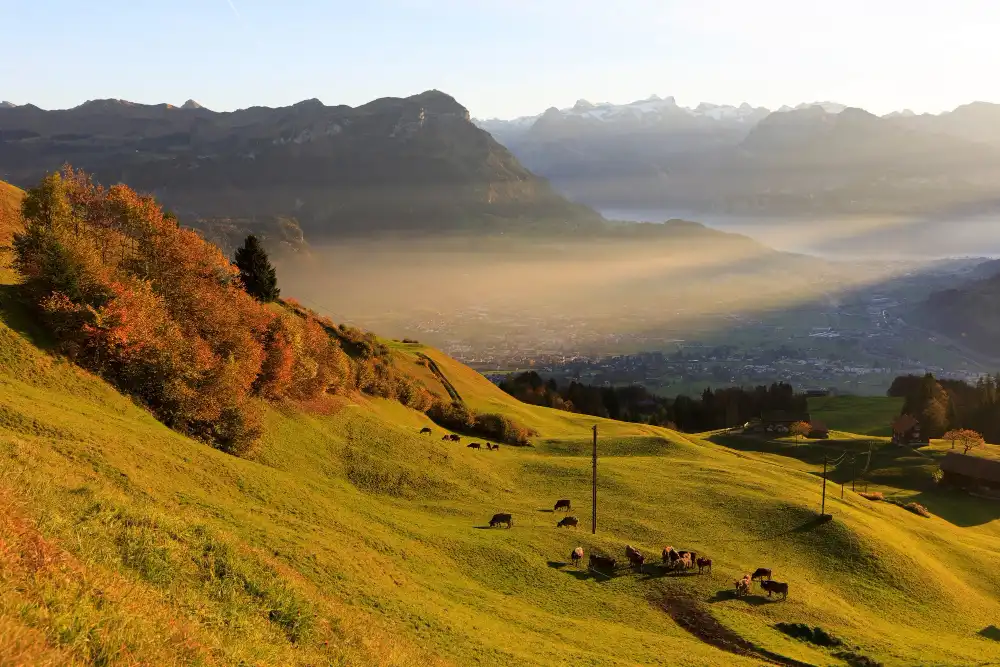When it comes to historical travel destinations, Armenia is best known for its age-old monasteries and spiritual landmarks. However, beyond the country’s religious heritage lies a world of fortresses and castles, built to defend against invaders and preserve Armenian sovereignty. One such treasure is Amberd Fortress, a cloud-covered medieval marvel that enchants anyone who visits. Whether you’re a history lover, an architecture enthusiast, or simply someone drawn to majestic landscapes, Amberd is a must-see on any Armenia tour.
Where is Amberd Fortress?
Amberd is perched high on the southern slopes of Mount Aragats, the tallest mountain in modern-day Armenia. Located just over an hour’s drive from Yerevan, this fortress is accessible yet remote enough to feel like a true escape into the past. The journey takes you through the scenic Aragatsotn Province, with mountain roads that gradually leave behind the villages and immerse you in untouched nature.
Its name, Amberd (Ամբերդ), means “fortress in the clouds”—an appropriate title given its high elevation and frequent veils of mist. It’s important to know that Amberd is not accessible year-round. Heavy snowfalls in winter can make roads dangerous, and local authorities often close access to prevent accidents. So, if you’re planning to travel to Armenia, make sure to check road conditions and schedule your visit during the spring, summer, or early autumn.
The History of Amberd Fortress
Amberd’s story stretches back to the 7th century, when the Kamsarakan noble family began its construction. As centuries passed, the fortress gained strategic importance and underwent expansion, especially under the Bagratuni dynasty in the 10th century. In 1026, the powerful Pahlavuni family took ownership of Amberd and further fortified it, making it one of the most important defensive sites in the region.
But the region soon faced waves of invasions. In 1045, the fall of Ani, the Bagratid capital, to the Byzantine Empire marked the beginning of instability. Not long after, the Seljuks seized Amberd and transformed it into a military base. Later, the Zakarian brothers, members of a noble Armenian family, successfully reclaimed it during the liberation efforts. However, in 1236, the fortress fell again—this time to the Mongols during their sweep through the region.
Amberd endured even more destruction during Tamerlane’s campaign in the late 14th century. After that, the fortress faded from historical records, slowly crumbling into ruins but never losing its majestic presence.
Architecture and Design
Amberd was designed with both defense and natural camouflage in mind. Its thick basalt stone walls, some measuring up to 3 meters thick, were built to withstand siege. The fortress included two main gates, as well as hidden escape tunnels leading down into nearby gorges. These tunnels weren’t just for evacuation—they also served as lifelines for collecting water during long sieges.
Excavations reveal that the central structure of the fortress likely had three to four stories. Because of its location, Amberd acted as both a military watchtower and a residence, offering sweeping views of the surrounding valleys.
Vahramashen Church: A Hidden Jewel
One of the most beautiful and intact buildings at Amberd is the Vahramashen Church, built in 1026 by Prince Vahram Pahlavuni. Constructed from local black basalt, it features a traditional cross-dome structure with four small chapels at each corner. What sets this church apart is the series of ceramic hollow tubes embedded in its dome. These were ingeniously designed to reduce the weight of the dome and improve acoustics during liturgies.
Unlike many Armenian churches from the same era, Vahramashen has minimal exterior decoration, making it simple yet elegant and deeply harmonious with the natural surroundings.
The Medieval Bathhouse and Water System
Amberd’s medieval bathhouse is another fascinating feature. Though it may seem unusual for a fortress, these baths reflect the Roman-inspired bathing traditions that reached Armenia through ancient cultural exchange. The structure includes a changing room, bathing hall, and a boiler room, and is equipped with a sophisticated hypocaust (underfloor heating) system, which circulated hot air beneath the floors to keep the interior warm.
What’s truly impressive is Amberd’s water supply engineering. A complex system of stone and clay pipes brought water from natural mountain springs located up to 5 kilometers away. Snowmelt and spring water were collected and stored in reservoirs. And in emergencies, a hidden tunnel provided direct access to the river below—ensuring survival even during prolonged attacks.
Daily Life in Amberd
While Amberd was primarily a military stronghold, excavations have shown that it was also a functioning community. Archaeologists have found metal tools, ceramic pottery, glass items, coins, and even decorative objects. Remnants of carpet fragments suggest that parts of the fortress interior were adorned with textiles, making it more than just a place of war—it was also a place of daily life.
These findings paint a picture of a vibrant, well-organized community, despite its remote and defensive role.
Why Visit Amberd?
Visiting Amberd Fortress is like stepping into a different era. The towering walls, rugged surroundings, and whispering winds combine to create a surreal atmosphere. Whether you’re interested in ancient architecture, Armenian history, or simply want to stand in awe of the panoramic mountain views, this site has something to offer.
If you’re planning a Tours Armenia itinerary or looking for off-the-beaten-path destinations during your travel to Armenia, Amberd should be high on your list. Its combination of natural beauty, historical depth, and architectural brilliance makes it one of the country’s most remarkable landmarks.

